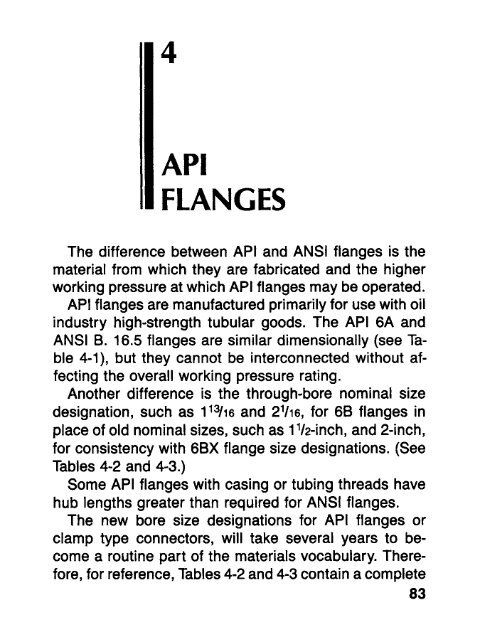You also want an ePaper? Increase the reach of your titles
YUMPU automatically turns print PDFs into web optimized ePapers that Google loves.
4<br />
APi<br />
FLANGES<br />
The difference between API and ANSI flanges is the<br />
material from which they are fabricated and the higher<br />
working pressure at which API flanges may be operated.<br />
API flanges are manufactured primarily for use with oil<br />
industry high-strength tubular goods. The API 6A and<br />
ANSI B. 16.5 flanges are similar dimensionally (see Ta-<br />
ble 4-1), but they cannot be interconnected without af-<br />
fecting the overall working pressure rating.<br />
Another difference is the through-bore nominal size<br />
designation, such as 113116 and 21116, for 6B flanges in<br />
place of old nominal sizes, such as 1V2-inch, and 2-inch,<br />
for consistency with 6BX flange size designations. (See<br />
Tables 4-2 and 4-3.)<br />
Some API flanges with casing or tubing threads have<br />
hub lengths greater than required for ANSI flanges.<br />
The new bore size designations for API flanges or<br />
clamp type connec<strong>to</strong>rs, will take several years <strong>to</strong> be-<br />
come a routine part of the materials vocabulary. There-<br />
fore, for reference, Tables 4-2 and 4-3 contain a complete<br />
83
















